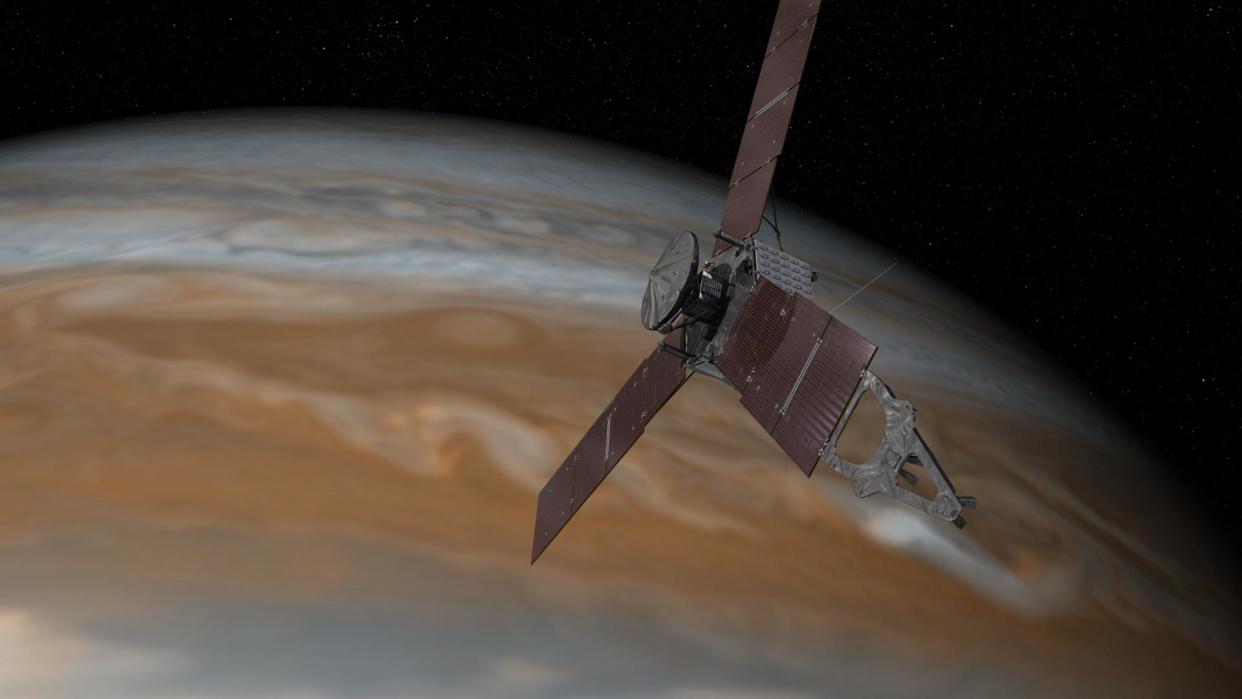NASA's Juno probe finds giant swirling waves in Jupiter's magnetosphere

NASA's Juno mission has recorded giant swirling waves at the edge of Jupiter's magnetic field, revealing new insight on how solar wind may impact the planet.
Data from Juno's many flybys of Jupiter showed that the spacecraft routinely encounters giant swirling waves, or vortices, at the boundary between the planet's magnetic field and the solar wind, known as the magnetopause. These phenomena, known as Kelvin-Helmholtz waves, occur when a large difference in velocity (speed) forms across two regions in space, according to a statement from the Southwest Research Institute (SwRI).
Although Kelvin-Helmholtz waves are not visible to the naked eye, Juno's instruments can detect them in observations of plasma — a mixture of charged particles, ions and electrons — and magnetic fields in space.
Related: Jupiter: A guide to the largest planet in the solar system
"Kelvin-Helmholtz instabilities are a fundamental physical process that occurs when solar and stellar winds interact with planetary magnetic fields across our solar system and throughout the universe," Jake Montgomery, lead author of the study and doctoral student at the SwRI, said in the statement. "Juno observed these waves during many of its orbits, providing conclusive evidence that Kelvin-Helmholtz instabilities play an active role in the interaction between the solar wind and Jupiter."
Data from Juno's magnetometer and the SwRI-built Jovian Auroral Distributions Experiment (JADE) were used to identify the Kelvin-Helmholtz waves, which are believed to transfer energy and mass from the solar wind — streams of charged particles emitted by the sun — to Jupiter, according to the statement.
Related Stories:
— How NASA's Juno Mission to Jupiter Works (Infographic)
— Surprise! Jupiter's ocean moon Europa may not have a fully formed core
— See Jupiter's volcanic moon Io glow red-hot in incredible images from NASA's Juno probe
"Juno's extensive time near Jupiter's magnetopause has enabled detailed observations of phenomena such as Kelvin-Helmholtz instabilities in this region," Robert Ebert, co-author of the study and a staff scientist at SwRI, said in the statement. "This solar wind interaction is important as it can transport plasma and energy across the magnetopause, into Jupiter's magnetosphere, driving activity within that system."
Their findings were published July 14 in the journal Geophysical Research Letters.

